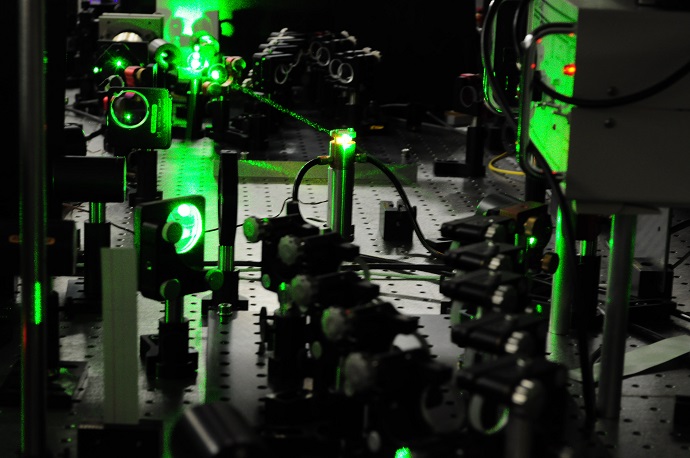September 19, 2014, 2014
An international team of physicists has shown that the mass ratio between protons and electrons is the same in weak and in very strong gravitational fields. Their study, which was partly funded by the FOM Foundation, is published online on 18 September 2014 in Physical Review Letters.
The idea that the laws of physics and its fundamental constants do not depend on local circumstances is called the equivalence principle. This principle is a cornerstone to Einstein’s theory of general relativity. To put the principle to the test, FOM physicists working at the LaserLaB at VU University Amsterdam determined whether one fundamental constant, the mass ratio between protons and electrons, depends on the strength of the gravitational field that the particles are in.
Laboratories on earth and in space
The researchers compared the proton-electron mass ratio near the surface of a white dwarf star to the mass ratio in a laboratory on Earth. White dwarfs stars, which are in a late stage of their life cycle, have collapsed to less than one percent of their original size. The gravitational field at the surface of these stars is therefore much larger than that on earth, by a factor of 10,000. The physicists concluded that even these strong gravitational conditions, the proton-electron mass ratio is the same within a margin of 0.005 percent. In both cases, the proton mass is 1836.152672 times as big as the electron mass .
Absorption spectra
To reach their conclusion, the Dutch physicists collaborated with astronomers of the University of Leicester, the University of Cambridge and the Swinburne University of Technology in Melbourne. The team analysed absorption spectra of hydrogen molecules in white dwarf photospheres (the outer shell of a star from which light is radiated). The spectra were then compared to spectra obtained with a laser at LaserLaB in Amsterdam.
Absorption spectra reveal which radiation frequencies are absorbed by a particle. A small deviation of the proton-electron mass ration would affect the structure of the molecule, and therefore the absorption spectrum as well. However, the comparison revealed that the spectra were very similar, which proves that the value of the proton-electron mass ratio is indeed independent of the strength of the gravitation field.
Rock-solid
FOM PhD student Julija Bagdonaite: "Previously, we confirmed the constancy of this fundamental constant on a cosmological time scale with the Very Large Telescope in Chile. Now we searched for a dependence on strong gravitational fields using the Hubble Space Telescope. Gradually we find that the fundamental constants seem to be rock-solid and eternal."
Reference
Limits on a Gravitational field Dependence of the Proton-to-Electron Mass Ratio from H2 in White Dwarf Stars, Physical Review Letters, 18 September 2014.
Paper on ArXiv.













